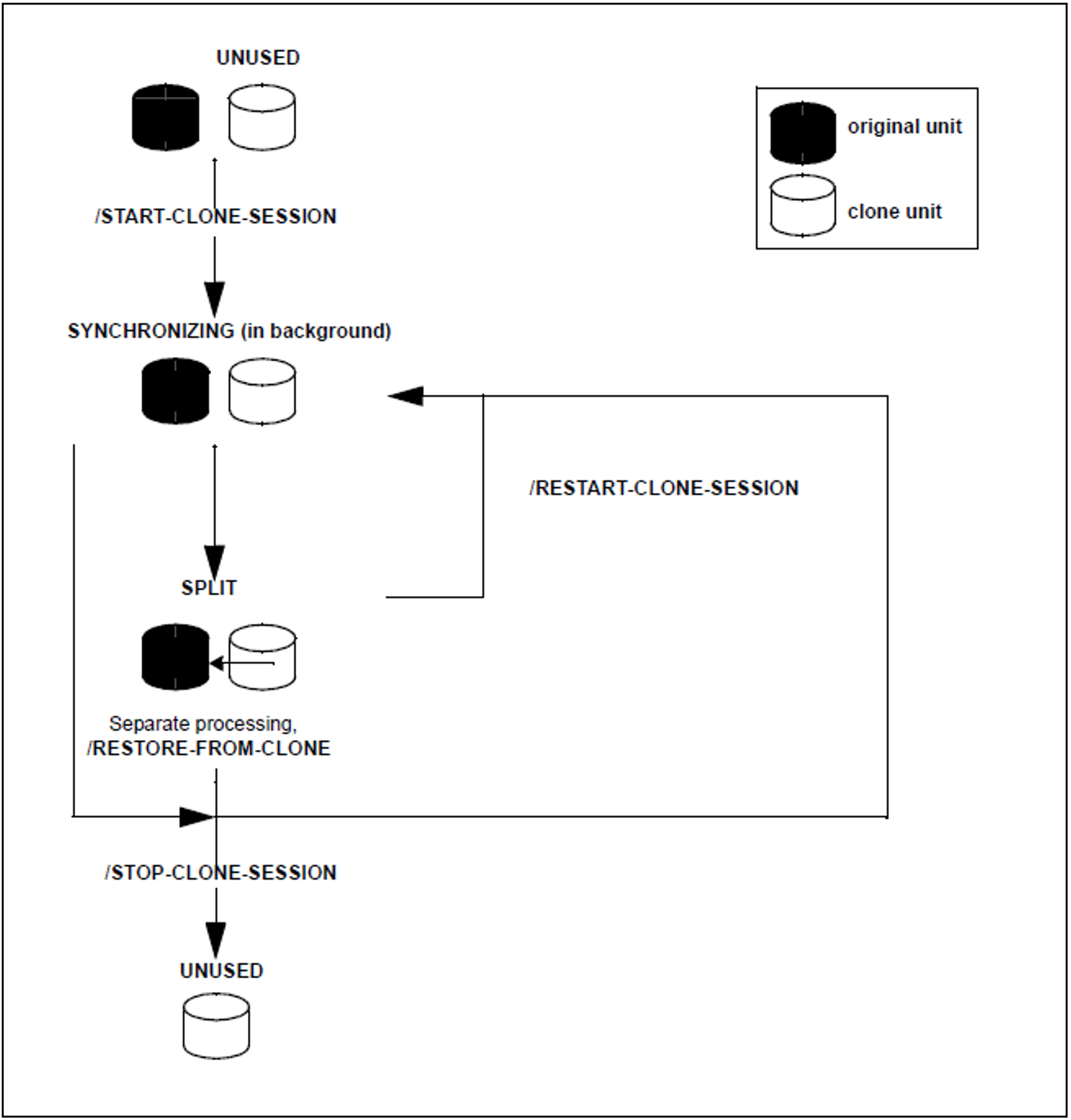This section describes the QuickOPC replication function for ETERNUS DX/AF, which offers the clone functionality.
Overview
QuickOPC creates a copy of the original unit at a particular time ("Point-in-Time copy"). The copy, which is called a clone unit, is available immediately. The clone unit is activated automatically and immediately after creation. The copy operation from original to copy is processed in the background. A mirroring between the original and the clone unit is not continued.
Together the original unit and clone unit form the clone pair which is managed by QuickOPC.
For simplicity’s sake, the term unit is generally used in this manual instead of original unit. A clone pair therefore consists of a unit and a clone unit.
QuickOPC does not require any special preconfigured devices. Any units of the same size of the storage system can be used as clone units. After creation the unit and clone unit are accessible, which enables both to be processed separately, for example by different applications. Unit as well as clone unit are accessible to the server.
During the processing the copy can be updated with the original data at certain points in time. Only the modified data is copied from the unit to the clone unit.
Direct reconstruction (copying back) from a clone unit to the unit (restore) is possible.
If the copy is discarded, the clone session is terminated and the clone unit can be used freely again.
SHC-OSD offers the option of consistent generation of a pubset’s clone units during ongoing operation. Stopping all inputs/outputs on all the units concerned while splitting is in progress ensures data consistency. Among other things, this can be used to create a consistent standby pubset from the home pubset.
Figure 10: QuickOPC
Application
The clone units which are provided by QuickOPC supply copies of the productive application data. Data backups, batch evaluations and program tests can consequently be executed on the copies of the “live data”. The original data is available in parallel to the main application, and as a result the latter can remain productive longer.
The copies generated with QuickOPC can be used for data backup (e.g. with HSMS or FDDRL). Replicas of databases can be generated with clone units.
Migration
The QuickOPC function is ideally suited to migrating data. To do this, a clone session is set up between the unit with the data to be migrated and the target unit (= clone unit), if required between multiple original and multiple target units.
After the copy procedure has been completed the data is available on the new clone unit. The clone session is now terminated and the clone unit can be used with the migrated data.
Device configuration
Special configuration of the devices for QuickOPC is not required. The devices can be mapped to BS2000 mnemonic names when at least one device is connected to the server.
Clone units
Freely available devices can be used as clone units provided they match the devices to be copied in terms of capacity and device type (D3435). The RAID level can differ.
Like any other disk, the units used as clone units must be generated in BS2000.
At present up to 32 clone units can be configured for a unit. This maximum number includes the total value for all replication functions, i.e. QuickOPC, EC, SnapOPC+ and REC. The SnapOPC+ sessions count as one replication. If the RESTORE function should be used, a replication has to be reserved for it.
Storage Cluster
The “Continuous Copy” function can only be used in a Storage Cluster if the local replication is executed with QuickOPC, see chapter "Storage Cluster Option".

